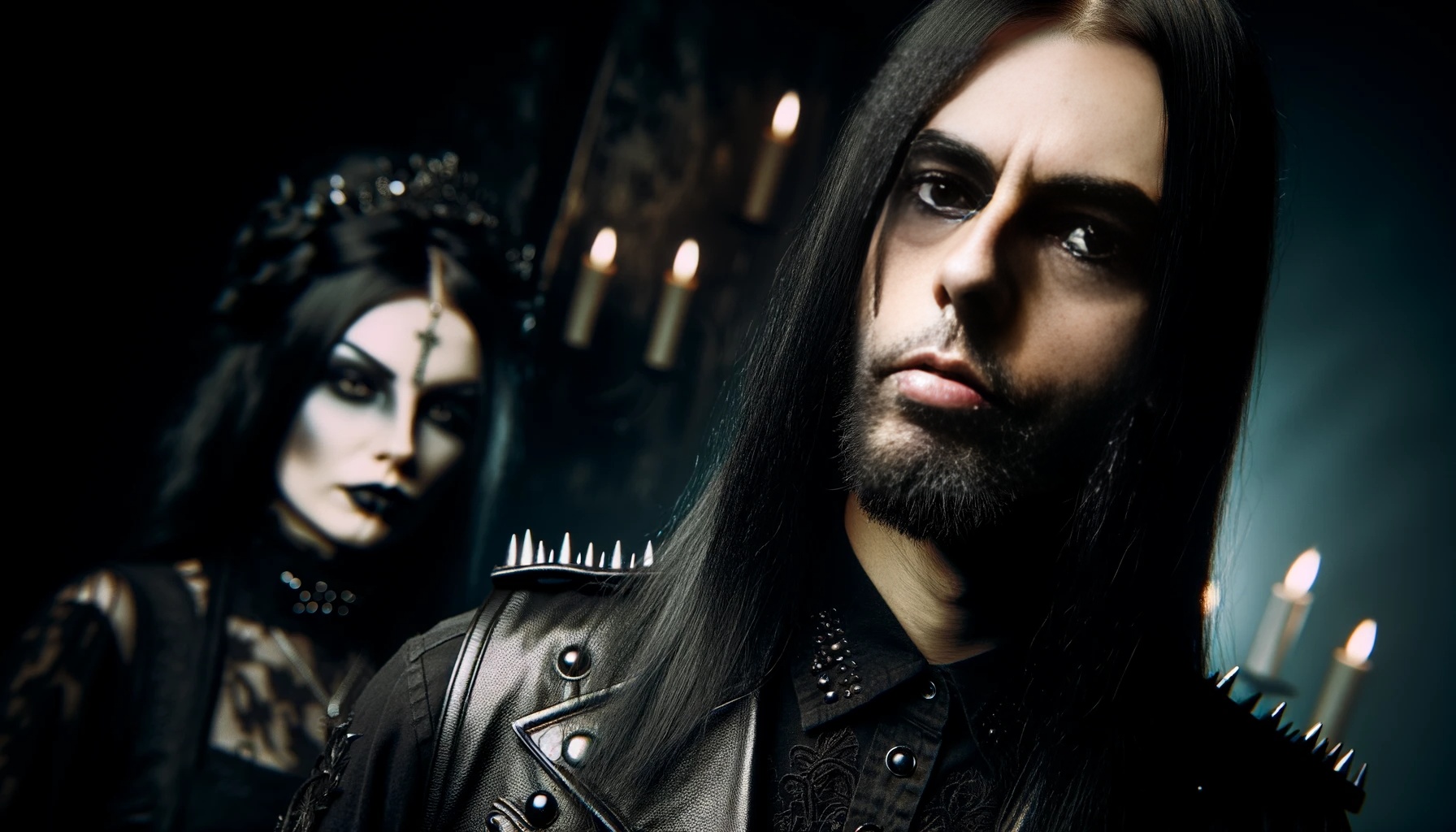The realms of metal and goth culture are not just about the music; they are a profound statement on personal identity, embracing a spectrum of self-expression that often transcends traditional gender norms. In this deep dive, we explore how the metal and goth scenes serve as sanctuaries for gender fluidity, offering unique perspectives on fashion that challenge the mainstream conventions of gender roles.

The Fusion of Fashion and Identity
In both metal and goth subcultures, fashion is not merely about aesthetic appeal; it’s a form of self-expression that communicates volumes about one’s identity. These styles have historically played with the norms of gendered fashion, incorporating elements traditionally seen as masculine or feminine to create a hybrid, androgynous look. This melding of styles speaks to a broader cultural acceptance within these communities, where the lines of gender are blurred, and personal expression reigns supreme.

Breaking Gender Norms with Androgynous Style
Goth and metal fashion frequently features elements like corsets, kilts, lace, leather, studs, and chains, often worn by any gender. This mix not only creates a visually striking appearance but also challenges the stereotypical ideas of what men and women should wear. The adoption of androgynous fashion in these communities underscores a rejection of binary gender norms, embracing a more fluid, inclusive approach to gender identity.

The Role of Icons in Shaping Perceptions
Iconic figures in metal and goth—think of artists like Marilyn Manson, David Bowie, and Grace Jones—have utilized their platform and stylistic choices to push the boundaries of gender expression. Their influence has been pivotal in shaping how fashion is perceived within the community, making it more acceptable for individuals to wear clothes that feel right to them, irrespective of societal expectations.

Gender Fluidity on Stage and Beyond
On stage, gender fluidity in goth and metal is even more pronounced. Performers often adopt personas that incorporate a mix of gender expressions, using makeup, costumes, and performance art to explore and express a range of identities. This theatricality allows fans to explore their own identities in a space that is free from judgment, supported by the community around them.

Community Support and Acceptance
Perhaps one of the most significant aspects of metal and goth subcultures is their emphasis on inclusivity and support. Unlike mainstream society, where gender nonconforming individuals may face prejudice and misunderstanding, the goth and metal scenes offer a supportive environment where individuals can explore and express their gender identity without fear. This sense of community is crucial for personal growth and self-acceptance.

Fashion as a Means of Empowerment
For many in the goth and metal scenes, fashion is not just about personal style—it’s about empowerment. Choosing what to wear and how to present oneself can be a powerful statement against conventional gender norms. It’s a form of resistance, a declaration of independence from societal expectations, and an assertion of one’s identity.

The Impact of Social Media
Social media platforms have become a vital tool for individuals in the goth and metal communities to share their fashion styles and stories, further promoting gender fluidity. Influencers and everyday fans alike use platforms like Instagram to showcase their unique styles, breaking down barriers and fostering a more accepting and diverse community. For more on this, check out my social media.

Challenges and Opportunities
While the metal and goth scenes are more accepting than many other communities, challenges still exist. Misunderstandings and stereotypes about what it means to be gender fluid can lead to exclusion or disrespect, even within alternative communities. However, these challenges also present opportunities for dialogue and education, which can lead to greater understanding and acceptance.

Future of Gender Fluidity in Metal and Goth Fashion
As society progresses, we can expect to see even greater acceptance and exploration of gender fluidity within the metal and goth communities. With each generation, the boundaries are pushed further, allowing for more creative expression and understanding of gender in new and evolving ways.

Conclusion
In embracing gender fluidity, the metal and goth scenes challenge us all to rethink and redefine what it means to express ourselves through fashion. They provide a space where the only rule is to be oneself, unapologetically and authentically. For those interested in exploring this topic further, including personal insights and stories, visit my detailed discussions on Lina’s Dungeon: Carnal Lust & Sexuality.
In the end, metal and goth are not just about music or fashion; they’re about finding a place to belong, where the only label that really matters is the one we choose for ourselves.




